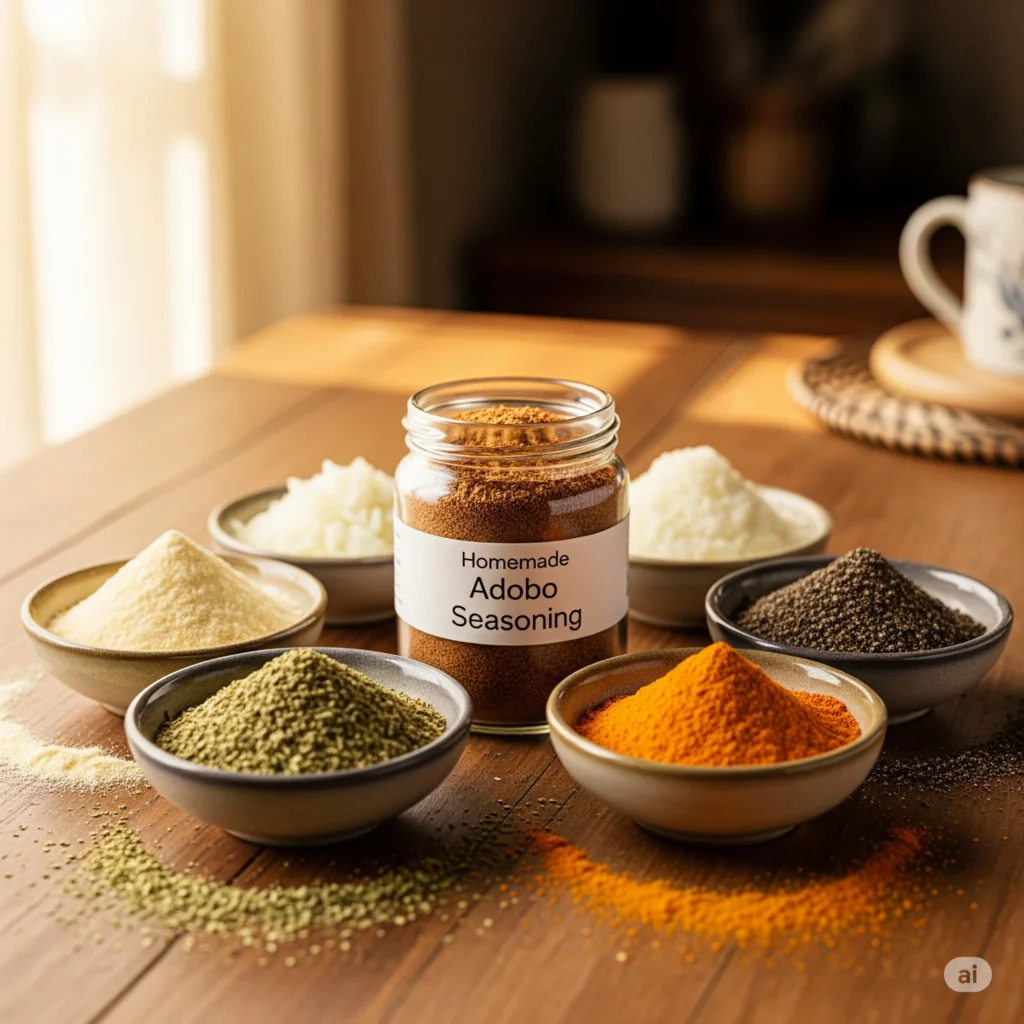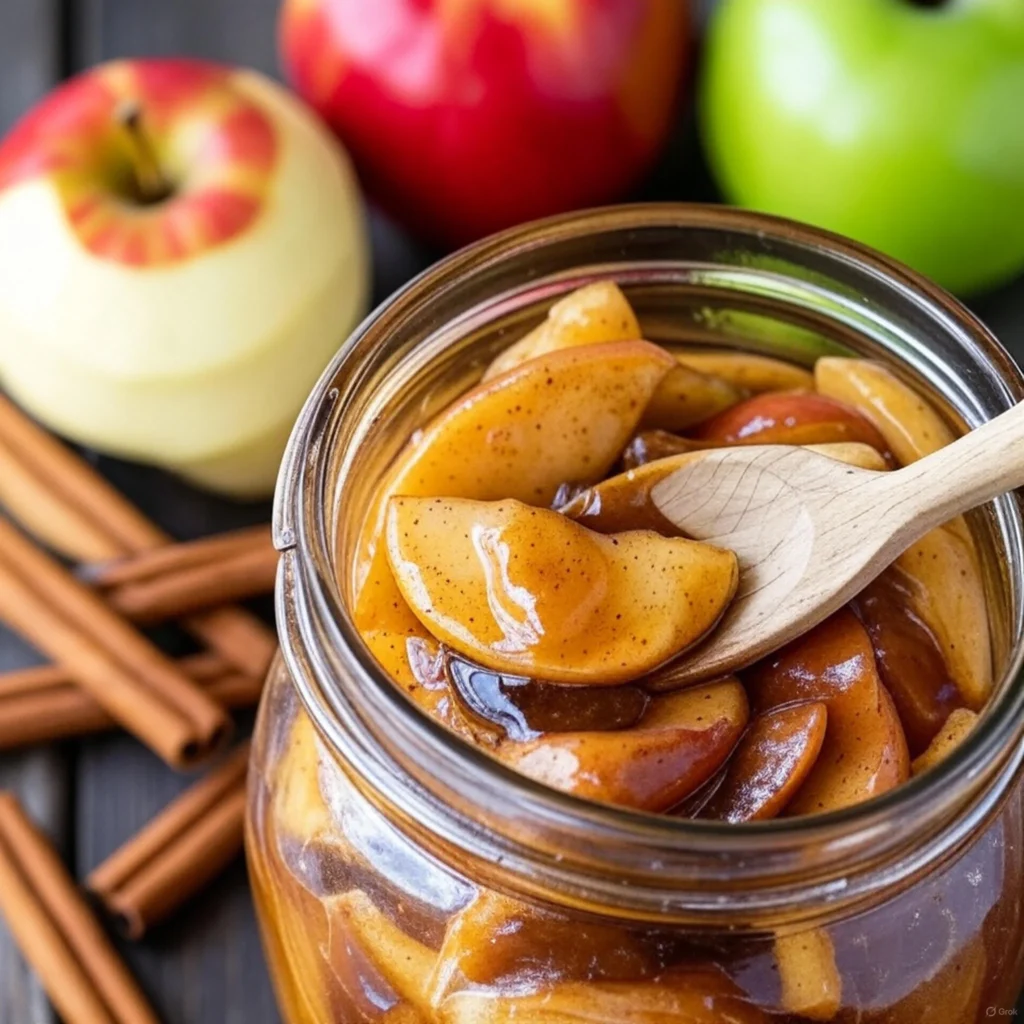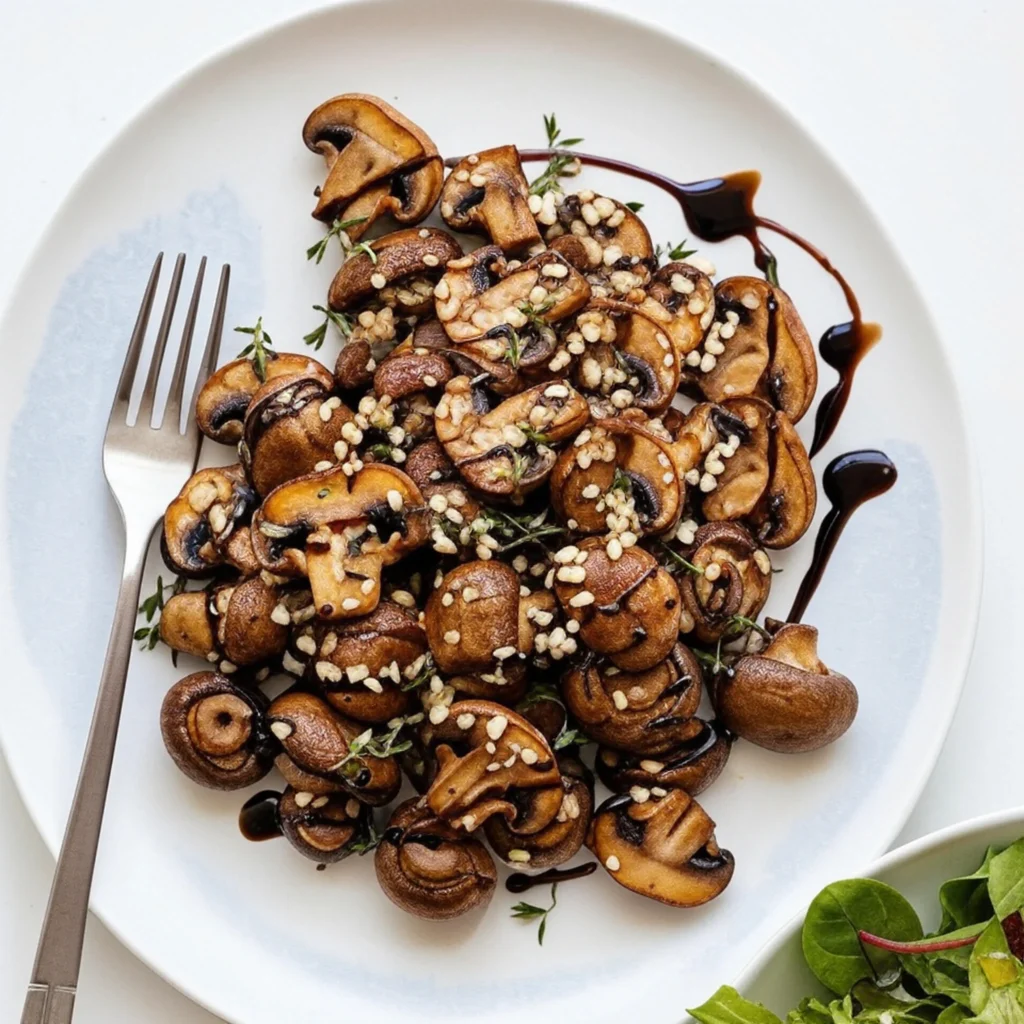
Adobo seasoning recipe
Hey, ever stumbled across a spice mix that’s basically a flavor superhero? Meet adobo seasoning, the unsung hero of your spice rack! This stuff’s like a magic wand for food—sprinkle it on chicken, veggies, or even popcorn, and boom, you’re a culinary wizard. It’s got this bold, garlicky, herby vibe that makes everything taste like it came from a fancy restaurant, but without the effort.
Trust me, once you try this, you’ll be tossing it on everything like it’s fairy dust. Let’s dive into how to make your own adobo seasoning and why it’s gonna change your cooking life.
What’s the Deal with Adobo Seasoning?
Okay, so adobo seasoning is this awesome dry spice mix that’s huge in places like Puerto Rico and the Dominican Republic. It’s not the same as that saucy Filipino adobo stew—think of this as its sassy, powdery cousin. It’s got garlic powder, onion powder, oregano, salt, pepper, and sometimes a pinch of turmeric or cumin for extra pizzazz. The result? A flavor bomb that’s savory, a bit zesty, and just a touch spicy. It’s like the seasoning version of that friend who makes every party better.
What is adobo seasoning used for
You can slap this on chicken for a crispy, drool-worthy crust or toss it on roasted potatoes for a snack you’ll fight your roommate for. Veggie lovers, don’t sleep on this—it makes tofu or lentils taste like they’ve been to flavor boot camp. Plus, it lasts forever in your pantry, so it’s perfect for those “what’s for dinner?” panic moments. It’s cheap to make, and you can tweak it to fit your vibe—more pepper for a kick or extra oregano for that herby goodness.
Oh, and it’s got this cool cultural backstory, tying together Latin American and Caribbean kitchens like a tasty hug. Basically, adobo seasoning’s your ticket to looking like a pro cook without breaking a sweat. (Word count: 202)
What is adobo seasoning made of?
Here’s the lineup for your homemade adobo seasoning. No fancy stuff, just pantry staples:
✅ 3 tablespoons garlic powder
✅ 3 tablespoons onion powder
✅ 2 tablespoons dried oregano
✅ 2 tablespoons salt
✅ 1 tablespoon black pepper
✅ 1 teaspoon turmeric (optional, for that golden glow)
✅ 1 teaspoon ground cumin (optional, for a smoky twist)
This makes about half a cup, enough to keep your meals poppin’ for weeks.
Quick Recipe Rundown
A. How Much You’ll Get
You’ll end up with about half a cup of adobo seasoning, which is like 24 teaspoon-sized servings. That’s enough to jazz up 10-12 dishes, unless you’re like me and go overboard because it’s that good.
B. How Long It Takes to Make
Five minutes, tops. Seriously, it’s quicker than scrolling through your phone to find a good meme. Just measure, mix, and you’re done.
C. Cooking? Nah, You’re Good
No cooking needed here. This is a mix-and-store deal, so you can skip the stove and still feel like a kitchen rockstar.
How to Mix This Magic Dust
Grab a clean bowl—glass is best so your spices don’t pick up weird vibes from last week’s soup. Dump in the garlic powder first, then the onion powder for that savory base. Add the oregano (give it a quick crush with your fingers to wake it up). Toss in the salt and pepper, and if you’re feeling fancy, a smidge of turmeric or cumin. Mix it all up with a fork or whisk until it looks like a sandy beach with oregano speckles.
Pour it into a jar, slap a label on it, and stash it somewhere cool and dark. It’ll stay fresh for six months, but let’s be real, you’ll use it up way faster. Shake it before using, and you’re ready to make your food sing with adobo seasoning.
Pro Tips to Level Up Your Adobo Game
Wanna make your adobo seasoning extra? Try toasting the spices in a dry pan for a minute to unlock their full flavor—it’s like giving them a quick pep talk. Want a zesty twist? Add a pinch of citric acid for a lime-like kick. If you’re avoiding gluten, double-check your spice labels. Play around with the ratios—more oregano for an herby vibe or extra pepper if you like a little sass. Keep it dry to avoid clumps; a silica packet’s your friend here. When using it, mix with a bit of oil for meats to get that crispy, flavorful crust.
Toss it into soups halfway through cooking so it doesn’t lose its mojo. If you live somewhere humid, pop the jar in the fridge. These tricks will make your adobo seasoning the MVP of your kitchen.
What’s the Nutrition Scoop?
Here’s the lowdown for a 1-teaspoon serving of adobo seasoning (about 5g):
- Calories: 10 (Basically nothing!)
- Total Fat: 0.2g (No biggie)
- Saturated Fat: 0g (High-five!)
- Cholesterol: 0mg (Heart’s happy)
- Sodium: 800mg (Whoa, go easy if you’re watching salt)
- Total Carbohydrate: 2g (Tiny)
- Dietary Fiber: 0.5g (A little bonus)
- Sugars: 0g (Sweet, none here)
- Protein: 0.4g (Small but mighty)
That sodium’s the only thing to keep an eye on, but a little adobo seasoning goes a long way for flavor.
FAQ
What is the flavor of adobo?
Oh man, adobo seasoning’s flavor is like a warm hug from your favorite cook. It’s savory and garlicky, with a punch of umami from the onion powder. The oregano adds this herby, almost Mediterranean vibe, while black pepper brings a subtle kick that doesn’t overstay its welcome. If you toss in cumin, you get a smoky depth, and turmeric adds a slight earthy note. It’s bold but not spicy-hot, making it the kind of seasoning that plays nice with everything from chicken to popcorn.
What is a good substitute for adobo seasoning?
Ran out of adobo seasoning? No panic! You can fake it with a mix of garlic powder, onion powder, oregano, salt, and pepper—basically, raid your spice rack and eyeball equal parts of each. If you’ve got a taco seasoning packet, that’s a decent stand-in, though it’s a bit spicier. Cajun seasoning works too, but it’s got more heat and complexity. For a quick fix, blend 1 teaspoon each of garlic powder, onion powder, and oregano with a pinch of salt and pepper. It’s not perfect, but it’ll get you through dinner!
What dishes use adobo seasoning?
Adobo seasoning is the MVP for so many dishes, it’s practically a kitchen cheat code. Rub it on chicken, pork, or steak before grilling for a crispy, flavorful crust. Toss it on roasted veggies like potatoes or zucchini for a snack you’ll hoard. It’s awesome in soups, stews, or beans for extra depth. Even sprinkle it on scrambled eggs or popcorn for a lazy-day upgrade. Basically, if it’s edible, adobo seasoning can make it taste like you spent hours cooking when you didn’t.
Adobo seasoning origin
Adobo seasoning’s got roots that stretch across oceans, and it’s a total cultural mash-up. It started in places like Puerto Rico and the Dominican Republic, where Spanish, African, and indigenous vibes mixed in the kitchen. The name comes from the Spanish word “adobar,” which means to marinate or season—think old-school tricks for preserving meat. Over time, it became this dry spice blend that’s a staple in Caribbean and Latin American cooking. It’s like a love letter to those sunny islands, packed into a jar.
Why is it called adobo seasoning?
So, why “adobo”? It’s all about history, my friend. The term comes from the Spanish “adobar,” which means to marinate or preserve. Back in the day, folks used spice mixes and vinegar to keep meat fresh before fridges were a thing. Fast forward, and the dry version—our pal adobo seasoning—kept the name but ditched the wet marinade. It’s like the cool, low-maintenance cousin of the saucy adobo dishes you’ll find in Filipino or Mexican cooking. The name just stuck, and we’re not complaining!
Is adobo Mexican or Filipino?
Tricky question! Adobo seasoning, as we’re talking about it here, is mostly a Caribbean thing—think Puerto Rico and the Dominican Republic. But the word “adobo” pops up in both Mexican and Filipino kitchens too, just in different ways. In Mexico, adobo can mean a spicy, chili-based paste or marinade. In the Philippines, it’s that famous tangy, vinegary stew. The dry adobo seasoning we’re mixing up is more of a Latin American star, but it’s got cousins all over the globe thanks to Spanish influence.
Why is adobo seasoning so good?
Adobo seasoning’s like that friend who makes everything better just by showing up. It’s the perfect balance of savory, herby, and slightly peppery, so it amps up flavor without stealing the show. The garlic and onion powder give it that cozy, umami depth, while oregano and pepper keep it lively. It’s stupidly versatile—works on meat, veggies, or even a boring bowl of rice. Plus, it’s a breeze to make and lasts forever. Honestly, it’s like a flavor shortcut to looking like a cooking pro.
What does adobo sauce taste like?
Okay, adobo sauce is a whole different beast from our dry adobo seasoning. The sauce, often found in Mexican or Filipino dishes, is tangy, rich, and sometimes spicy. In Mexican cuisine, it’s got smoky chilies, garlic, and vinegar, giving it a bold, slightly sweet heat—think chipotle vibes. Filipino adobo sauce leans more tangy and savory, with soy sauce, vinegar, and bay leaves. It’s less about the dry spice mix we’re making and more about a wet, braised deliciousness. Totally different, but equally drool-worthy!
you may like it




